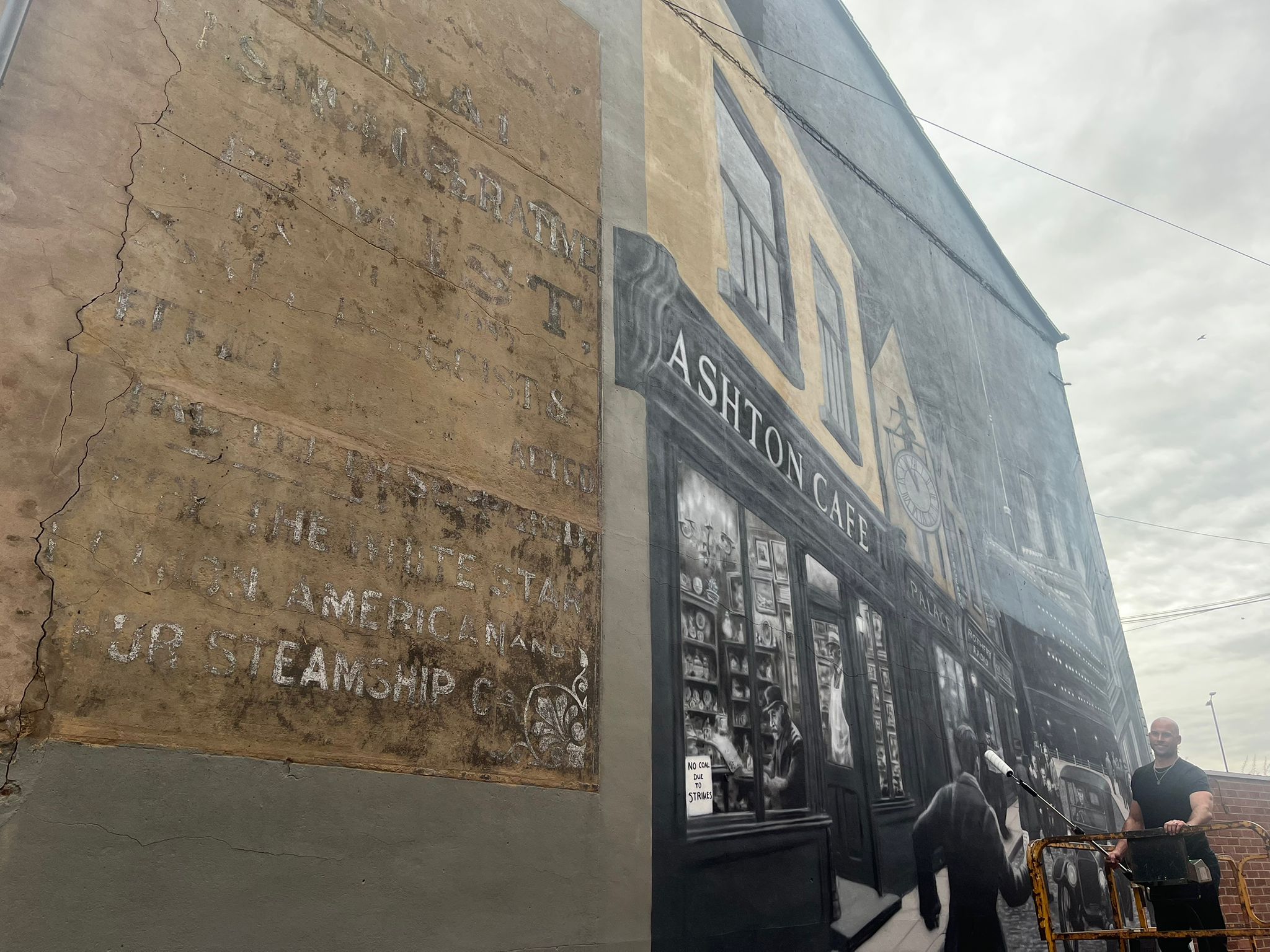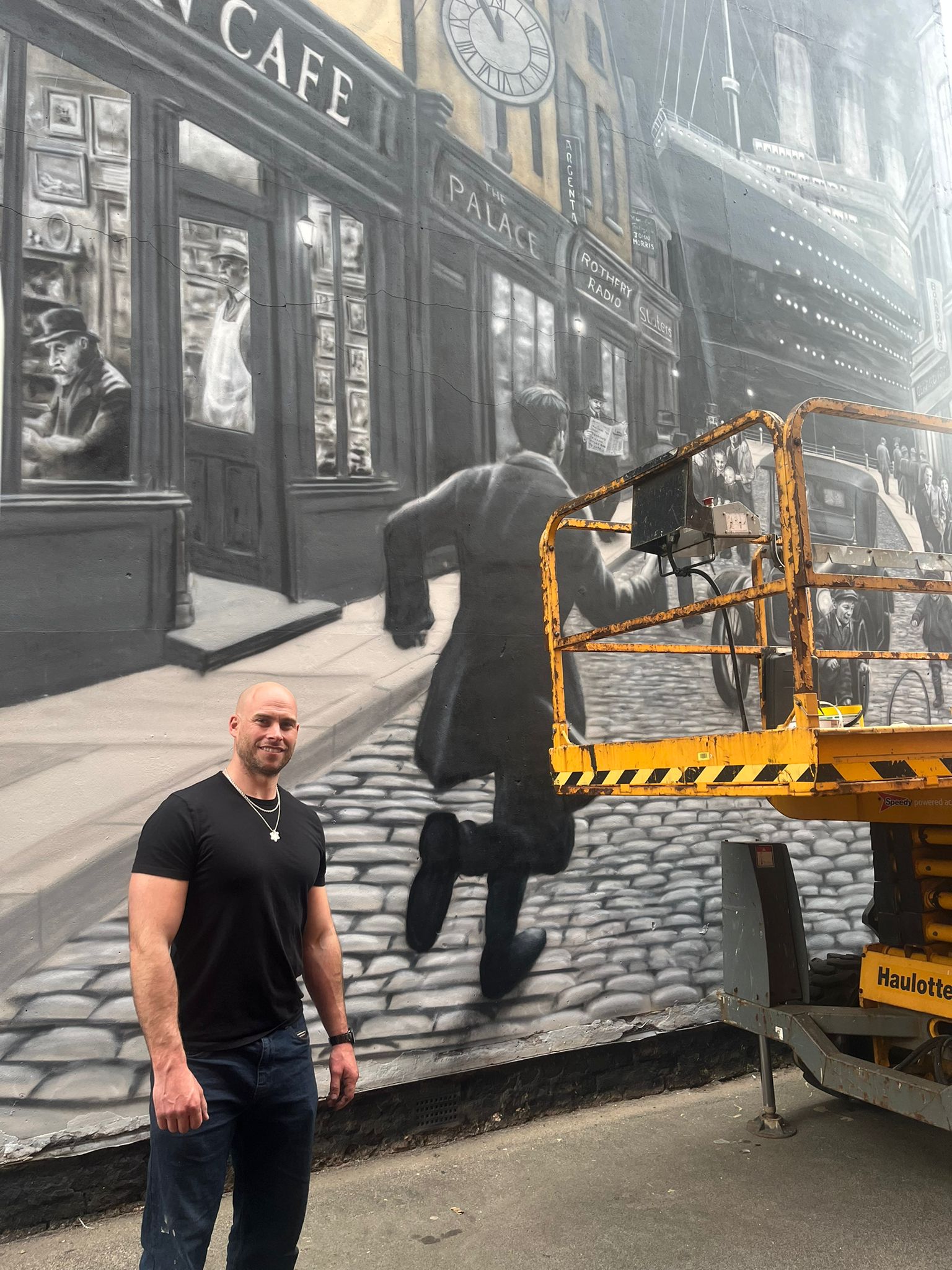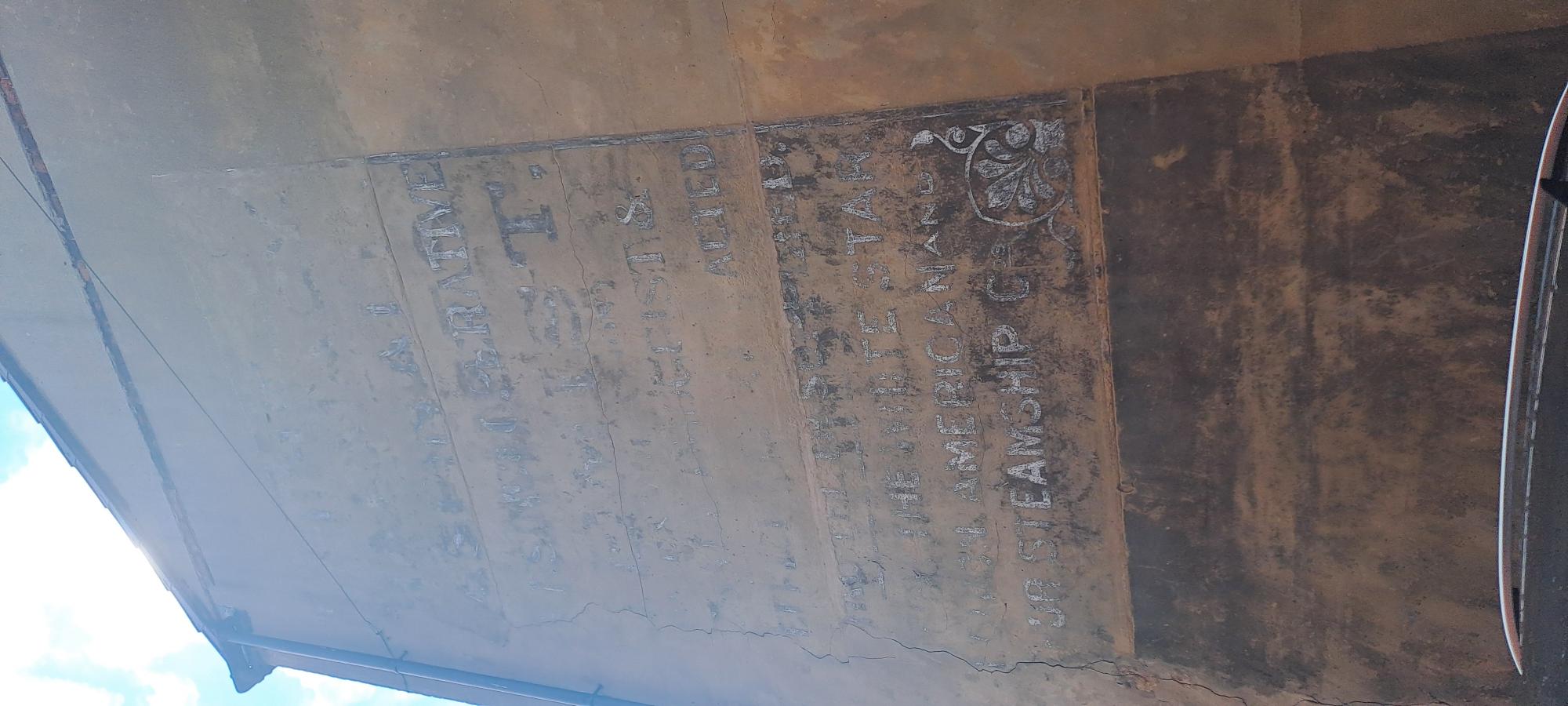The Ghost Sign of Ashton's Past
Posted on 6th Oct 2025 by AWL Team
The Ghost Sign of Ashton’s Past
You might have noticed the mural that’s gone up on the side of Andy’s All-Day Breakfast in Ashton-in-Makerfield. It shows a traditional cobbled street, the sort common in Ashton 100 years ago, but at the end of it – an enormous Ocean Liner! If you were wondering why an old steam ship was chosen, it’s a reference to a ‘Ghost Sign’ located on the same wall. The sign includes an advertisement for William Aspinall’s Chemist that was also a licensed vendor of tickets for ocean liners and steamships.

Above: The new mural off Gerard Street by Snow Graffiti
The artwork has been commissioned by Wigan Council and funded by Local Regeneration Funding as part of the Our Future Ashton project. Internationally acclaimed Ashton-based artist, Snow Graffiti, was chosen to deliver this piece and has done an outstanding job of capturing a unique part of the town's heritage.
But why would a chemist be selling tickets for steamship companies?
Before planes took off as a common way to travel, ocean liners provided long distance transportation. This travel included Royal Mail delivery, and the transport of valuable goods as well as people.
People travelling overseas could be going on holiday, temporary migrants or permanently emigrating from Britain. During the nineteenth century waves of emigration from Europe happened for many reasons. In Britain and Ireland, the Highland Clearances, new private ownership of agricultural land, and the Potato Famine led to significant exoduses. Across Europe ethnic, religious, political, and economic upheavals alongside the prospect of better opportunities led to many seeking new lives. The ‘New World’ with ‘unclaimed’ agricultural land and rapidly growing cities provided an opportunity to millions. British emigrants also travelled to other parts of the Empire such as Australia and South Africa.
In total 65 million Europeans emigrated between 1815 and 1932. Most of these journeys would have been taken by boat with ocean liners such as ships. Famous examples include the Mauritania, Lusitania, and most famous of all the Titanic, making the journey more accessible. The US, Brazil, Canada, Cuba, Argentina and Uruguay were among the most common destinations. The value of the industry meant that liners were subsidised by national governments competing to have the most impressive fleets, and providing opportunities for local entrepreneurs to set up as agents.
William Aspinall was a prominent local figure in Ashton; he sat on numerous boards and took on positions in the Urban District. In fact, when he was appointed to a fourth simultaneous role, the Abram Local Board decided to remove his role as highway collector, perhaps because it was felt he was doing too much or the Local Board felt these paid positions should have been spread out.

Above: Artist Snow Graffiti
It seems Aspinall was an arm’s length owner of the chemists, and an advert from 1888 indicates that he owned a chain of chemists with branches in Scholes, Ashton, and Platt Bridge. Although he qualified as a dentist and chemist in 1884, his life seems to have been spent in numerous public roles.
William Aspinall was clearly an ambitious and entrepreneurial man, taking advantage of any business opportunity that came his way. It’s no surprise then that he would give his chemists’ shops a ‘side hustle’ in being travel agents too!
What Does it Say?

Above: Image of Ghost Sign
Since the murals gone up, the Ghost Sign for William Aspinall’s Chemist has started to stand out more. It’s an ad for the chemists and steamships but we’ve not figured out what the whole sign would have said. Look at the image of the sign or stop for a moment next time you’re walking down Gerard Street. If you think you’ve figured out what it says, send us a message through the comment portal on the main page of the blog.
Sources :
Mr. William Aspinall, Our Portrait Gallery. Wigan Examiner. Friday 09 August 1907. Accessed British Newspaper Archive.
50 Years Abram Council – Interesting and Varied Career. Wigan Observer. 29 August 1936.
Ocean Liner. Encyclopaedia Britannica. Accessed from: Ocean liner | Definition, History, Ships, & Facts | Britannica
Altman, Ida; Horn, James (1991). "European Diaspora: The Magnitude and Pace of Emigration". 'To Make America': European Emigration in the Early Modern Period. University of California Press.